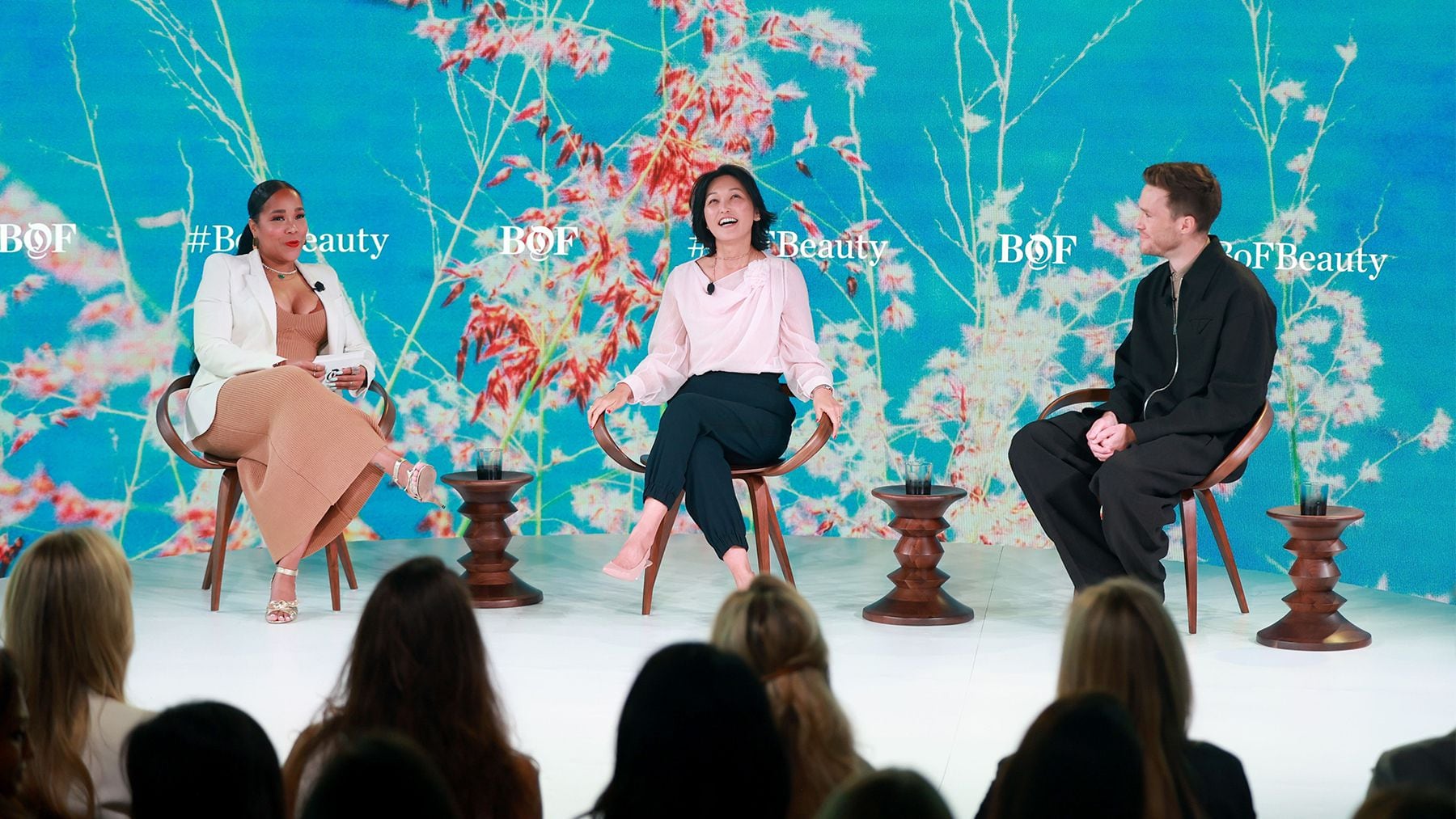
The beauty industry is not short on ambitious entrepreneurs and founders looking to make an impact by disrupting the status quo.
In the second session of The Business of Beauty Global Forum in Napa Valley, California, founders, retailers, executives and investors came to together to dissect the opportunities for growth in the sector, how to scale creatively as well as how best to position one’s brand for a potential exit and what it takes to create a forever brand.
“How long does it take to build a forever brand?” said Priya Rao, executive editor at The Business of Beauty. “Too many brands make the mistake of overextending … putting their long term viability at risk.”
Speakers such as Sephora’s global chief merchandising officer Priya Venkatesh, founder of her namesake cosmetics label Danessa Myricks, Amouage chief creative officer Renaud Salmon and Sol de Janeiro co-founder and CEO Heela Yang convened on stage to discuss strategies that are propelling their businesses forward.
Finding the right partners is key to success
While competition in beauty has expanded in recent years, a brand’s path from launch to exit has shortened.
“The cycles have become compressed and one of the major reasons is TikTok,” said Venkatesh. “Records are being made, it’s like an Olympic sport.”
The platform’s global reach and wide audience has made the path to purchase much shorter with some users learning of a brand and shopping its products in a matter of seconds helping brands grow much faster, Venkatesh added.
Retailers like Sephora are interested in creating value for consumers and courting brands with strategies for growth that rely less on buzz and more on longevity. When Danessa Myricks began considering wholesale distribution, she compared the process of meeting with retailers to dating.
“It’s easy to see who is a cheap date and who isn’t … I was interested in partners who were in it for the long-haul,” Myricks said. “It’s a delicate balance of being who you are and maintaining your identity but in [the retailer’s] home with their audience.”
What the boom in M&A activity means for brands looking for an exit
This year is shaping up to be one of the most dynamic for dealmaking in a while, with beauty labels exploring their strategic exits either through going public or courting a buyer.
“M&A happens when there is a fundamental change in the consumer,” said Vennette Ho, managing director and global head of beauty and personal care at investment bank Raymond James. “The consumer needs and wants are what the strategics don’t have … and M&A becomes a necessity.”
Values closer to consumers’ hearts are often in line with those of brand founders who can more directly speak with their audiences, Ho added.
Finding a buyer, however, is not necessarily easier despite the buoyant M&A landscape. Private equity firms and conglomerates are more likely to update the marketing of their in-house brands or incubate labels that can better speak to today’s consumers.
“We don’t think you’ll see a tremendous slowdown in the number of deals,” said Ho. “It’s the conversion rate. How do you get to be that one company that gets acquired? That bar is so much higher.”
Staying relevant in a fast-changing environment
Companies cannot rely on acquiring buzzy labels in order to stay relevant with today’s consumer. Brands and labels need to establish strategies that allow them to keep their core consumers loyal while welcoming newcomers.
According to Unilever’s chief executive of the prestige division Vasiliki Petrou, maintaining a brand’s relevance relies not on generational characteristics but lifestyle segments.
“[Brands need to be thinking] about personalised interests at scale and finding ways to scale the niches according to the cultural zeitgeist,” Petrou said.
Petrou judges the reliability of a brand’s relevance by how agile it is to a changing macroenvironment and who are motivated by “giving back and being generous to the industry.”
If brands are motivated by a potential acquisition, “it will push them to make the wrong moves,” said Petrou. “How can [a founder] ensure that their brand will exist in the next 30 years?”
The opportunity in fragrance
Once a sleepy category associated with special occasions, today’s consumers are integrating fragrance into their everyday lives, fuelling a boom in accessible perfume mists and fine fragrances.
Sol de Janeiro founder and chief executive Heela Yang says the fragrance boom can be attributed to changing consumer tastes during the pandemic and the rise of the democratisation of beauty brands thanks to platforms like TikTok.
“Fragrances became more than just the finishing touch that you apply very quickly before rushing to work,” said Renaud Salmon, Amouage’s chief creative officer. Salomon, in his position, hopes to create emotional connections between shoppers and perfumers in the hopes that they will integrate Amouage fragrances in their daily lives.
Yang and her team said their product development was inspired by what the consumer was asking for when they transformed the scent of their viral cellulite cream into a body mist.
“Consumers are very smart,” said Yang. “They know what they want, and they tell us everything. And it’s our job to pay attention to that.”
Can marketplaces work for your business?
The marketplace model is driving growth in beauty despite brands’ reservations around affinity, pricing and promotions. The cost of doing business has increased in recent years and the effectiveness of the direct-to-consumer model has diminished, leaving brands looking for new channels to drive sales.
“A major concern with DTC brands from the jump was that you were going to cannibalise the demographic you were selling to if you consider a marketplace,” said Alexandra Carmody, vice president of brand strategy at e-commerce tech company Front Row, who says marketplaces offer brands an opportunity to reach different consumers.
Wunderman Thompson research suggests that more than 35 percent of all online purchases are made on a marketplace. These transactions are expected to reach 60 percent in 2027. Carmody credits TikTok for successfully converting shoppers to marketplaces.
“Gen-Zers and Gen Alpha are engaging with content on TikTok, doing a bit of research on a DTC site but completely bypassing Google and going straight to Amazon to search for the brand,” said Carmordy.
Carmody and her team are, therefore, seeing increased branded searches on marketplaces which could be a major driver for growth.
The case for masstige
Shoppers today are no longer purchasing their beauty products from one brand or price point.
In recent years, mass market beauty brands have been strong challengers of high-end and prestige beauty labels, thus forcing these brands to rethink their positioning.
Oftentimes brands confuse their distribution for their brand, said Brian Bordainick, founder of acne care label Starface.
“I just think your brand is your brand,” said Bordainick. “The customers are always thinking about what it stands for and what it represents because they are so fluid between all of these retailers.”
Today’s beauty shoppers are also more educated on the benefit of skincare ingredients and are less likely to let a price be a signifier of how efficacious a product is.
“30 or 40 years ago, you could find bad products on the shelf,” said Bordainick. “I think it’s exceptionally rare for that to happen today. In a world where everybody can make efficacious products, how do you distinguish yourself?”
Ticking all the beauty boxes
When makeup artist Gucci Westman and her husband and business partner David Neville founded Westman Atelier, retailers tried to define them and their consumers.
“We can’t really be pigeonholed. Retailers tend to segment [the brand] into luxury, makeup artistry or clean,” said Neville. “The most important thing is the performance of the product … and good products sell themselves.”
Growing up in Sweden “where the lifestyle is all about value over quantity,” is what inspired Westman to launch a slow beauty brand with a strong focus on ingredients and formulations over chasing industry trends.
The duo is using the same approach when thinking about the longevity of the brand and is interested less in an exit strategy than in brand building.
“I honestly think we prioritise product over commerce,” said Neville. “We really wanted to do something we could be proud of.”



